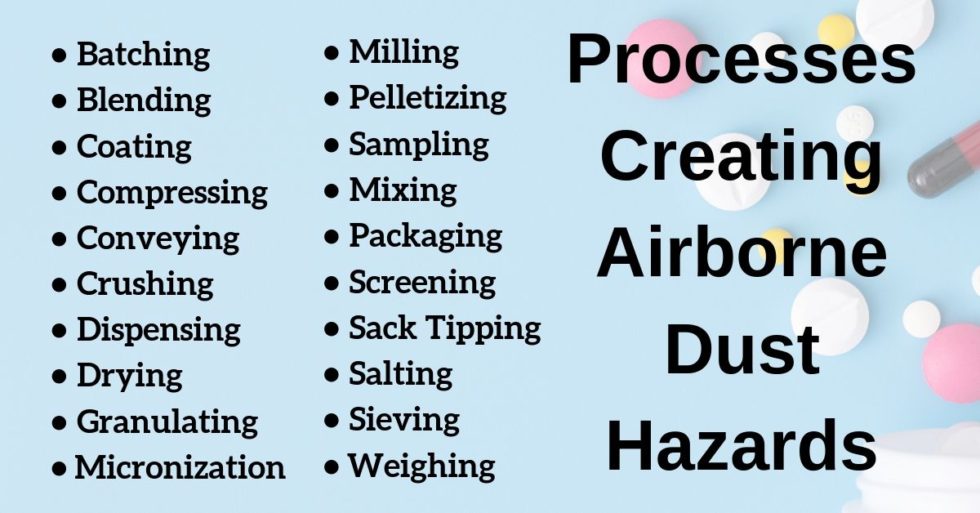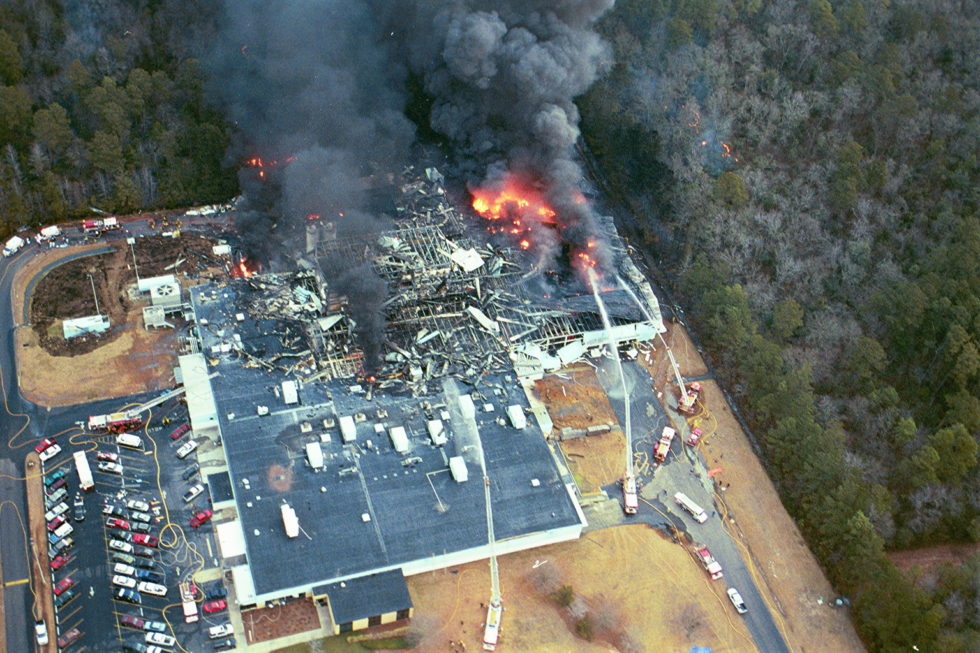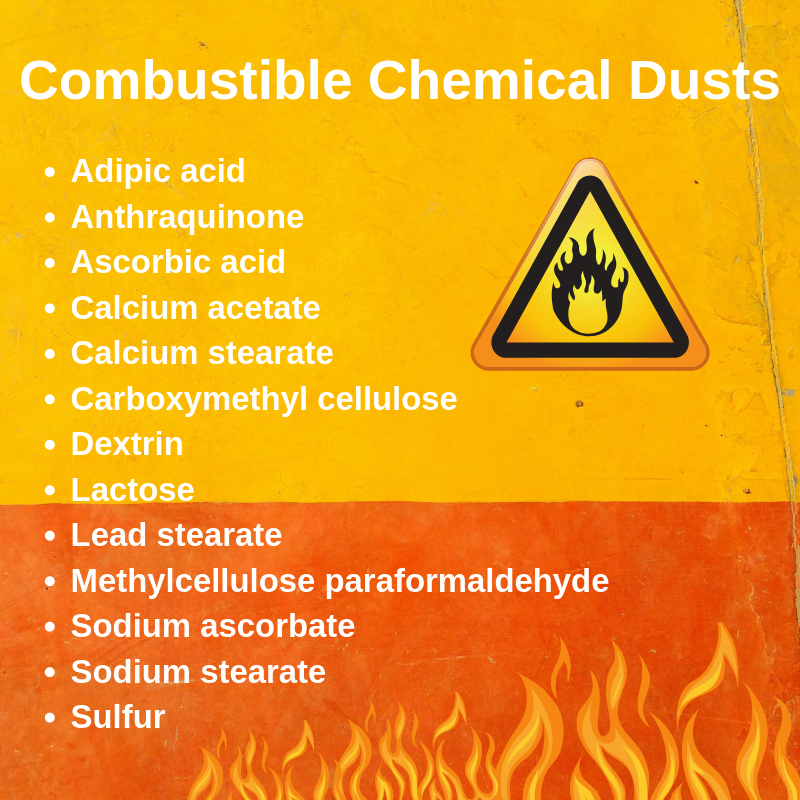
It’s a known fact: Most production processes create some kind of dust. In pharmaceutical manufacturing facilities, airborne dust particles (some toxic) may be combustible. If you manage a pharma-production facility, knowing what processes create dust and what dusts are combustible will help maintain code compliance and minimize fire risks.
What Pharma Production Processes Create Dust?
Every pharma facility’s product line will vary, but there are common production processes known to produce dust. Some may be overlooked in every-day operations, as the dust produced may seem minimal and not a threat. Not all combustible dust particles are visible to the eye!

(per Camfil reference below)
If a chemical dust particle becomes airborne and is combustible, even the slightest spark can be very dangerous. On January 29, 2003, the West Pharmaceutical Services plant in Kinston, North Carolina suffered a combustible dust explosion, killing six people and injuring dozens more. 1 The fuel for the explosion was a fine plastic powder.

(photo courtesy of CSB.gov)
How Do You Know What Dusts are Combustible?
The National Fire Protection Association’s NFPA 652 is the standard enforced on combustible dust. It requires manufacturers to perform a dust hazard analysis (DHA) to assess if the dust is combustible. The DHA will help in determining the risk and level of required fire and explosion protection. 2

This list is not meant to be inclusive of all combustible chemical dusts.
Once the risks are established, a collection system should be installed. To mitigate accumulated combustible dust, contact a company whose technicians are combustible dust trained and certified and use grounded equipment.
In addition to NFPA 652, pharma facility managers need to be follow OSHA (Occupational Safety and Health Agency) standards on combustible dust. OSHA is responsible for policies and procedures regarding inspections of facilities that create or handle combustible dust. Its 2008 “Combustible Dust National Emphasis Program” is applicable to all industries and types of combustible dust.
It’s Complex, but Containable and Preventable
The combustible dust explosion itself is complex, in that the primary explosion (the first point of ignition) is usually isolated. However, the force from the primary explosion often triggers a secondary explosion— by igniting airborne particles, or by disturbing dust that has accumulated on machinery, ceiling fixtures, or rafters. The secondary explosion is far more extensive and dangerous.
Understanding the risks of pharmaceutical combustible dust and knowing how to manage it, however, does not have to be complex! The bottom line? 1) know what dusts in your pharma facility are combustible by conducting a DHA, 2) adhere to NFPA and OSHA standards, and 3) use dust collection systems and a professional combustible dust cleaning company.
Following these steps will keep your pharmaceutical facility clean, compliant, and most importantly, your employees safe from potential combustible dust explosions.
Hughes Environmental performs combustible dust cleaning in a wide array of facilities throughout the United States and deals with many types of combustible dust.
Hughes Environmental abides by standards set by the NFPA, NADCA, and OSHA when performing combustible dust cleaning and uses
equipment approved for combustible dust cleaning, such as intrinsically safe vacuums and grounded hoses.
Contact Hughes Environmental today to schedule your combustible dust cleaning; call: 888-845-3952 or complete your request online.
1 West Pharmaceutical Services Dust Explosion and Fire; CSB; https://www.csb.gov/west-pharmaceutical-services-dust-explosion-and-fire/
2 Chemical and Pharma
Processing Whitepaper; “Controlling Dangerous Dusts in the Pharmaceutical and
Chemical Processing Industries,” by David Steil, Matt Caufield and Brian Richardson;
Camfil Air Pollution Control. May 2019
Additional Reference:
Are You Overlooking
the Dust Explosion Risks in Your Pharmaceutical Plant? https://news.nilfiskcfm.com/2017/06/overlooking-dust-explosion-risks-pharmaceutical-plant/

